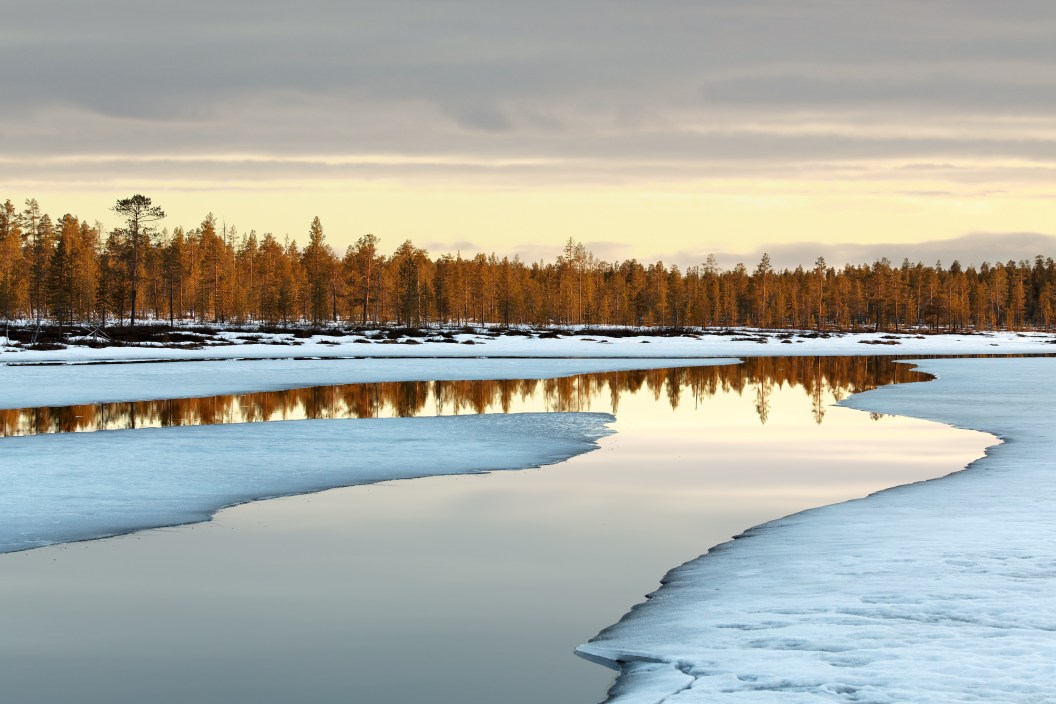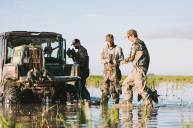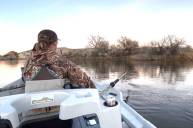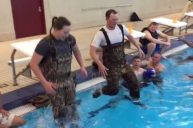An Oklahoma State graduate student and accomplished rodeo rider died in a tragic duck hunting accident on December 10, 2023, and authorities surmise his waders were to blame.
Jackson Williams, 24, was hunting waterfowl in Sooner Lake, an hour west of Tulsa, Oklahoma, when he ventured out into the lake to retrieve a duck. It is unknown at this time if Williams was alone or with friends. Sadly, authorities presume that Williams hit a drop off in the lake's bottom and water flooded his waders, dragging him beneath the surface.
Oklahoma Game Wardens, with the help of the Oklahoma Lake Patrol, were able to locate and recover William's body from the lake bottom using side imaging.
Originally from Arkansas, William attended OSU to study plant and soil sciences and was a 4-H educator. He started his rodeo career in the 9th grade and then took his skill to Panola College in Texas, a college known for its rodeo team, which won four national championships from 2018 to 2022. Under his mentor Jeff Collins, the rodeo coach at Panola, Williams went on to compete in the Ote Berry Junior World Championship, where he finished in the top 20.
Captain Ben Bickerstaff of the Oklahoma Game Wardens stressed how dangerous waders can be when they fill with water, telling local TV station KOCO: "They're hard to get in and out of, even on dry land, and in a panic, in cold water, it can be really tough. Our hearts go out to the family and the friends and loved ones of this young man."
How To Prevent Wader Accidents
William's death is incredibly tragic, but it's also a good reminder to brush up on cold-water wading safety, whether duck hunting or fly fishing. While winter has taken over in many parts of the United States, plenty of outdoors people look to spend time on the water. With freezing air temperatures and cold water, it's more important than ever to know how to prevent wader accidents, and what to do if they happen.
1. Wear Your Waders Properly
Wader safety starts at the top. Wear your wader belt, and cinch it tightly. When water gets inside waders, it makes them incredibly heavy, pulling you deeper into the water. If you fall, walk, or drift into water that's deeper than your waders, a snug waistband helps to create a seal to prevent water from getting past the upper bib of your waders and filling up the legs. With a properly tightened belt, water can only fill the upper half of your waders and you should still be able to float on your back. Add an inflatable fishing vest to your kit if you are concerned about going in; these have a ripcord you can pull to inflate if needed to keep your head above water.
2. Move Slowly in the Water
Most wader falls happen when someone trips or slips on the river bed. Moving through flowing water is very difficult, and even more difficult if it has a rocky or uneven bottom. Always move slowly, making sure of each foot placement before committing to it. If the water is moving quickly, face upstream and shuffle sideways through to help you keep your balance. Consider bringing along a hiking stick to help you keep your balance.
3. Always Wade With Friends
Many of us like fishing and hunting because it allows us the space and quiet needed to get in touch with ourselves and our environments. That being said, if you're wading in the winter, make sure you go with a group and make sure you're all looking out for each other. Having multiple pairs of eyes on the river will help catch emergencies sooner, and many hands will make lighter work of any rescue situation that arises.
If you intend to go alone, leave your location and planned duration with a trusted friend who can come looking for you if you don't check in at an agreed-upon time. Consider taking a satellite communication device with you as well.
4. Know the Four 'A's of Rescue
In any rescue situation, including a cold-water wading rescue, it's important to go back to the basics to keep you calm, focused, and on track. The "Four 'A's" are four steps to take in any emergency situation: Awareness, Assessment, Action, and Aftercare.
First, you want to stay aware while wading. Always been on the lookout for potential dangers or situations that could develop into emergencies.
If something happens, take in all of the available information and make a quick assessment as to what's going on and what needs to be done to correct it.
Then, take action to stop, solve, or address the emergency. This will differ widely depending on what the situation is; before going into the backcountry, make sure you're prepared with the right tools and education—wilderness first aid classes, swift water rescue courses, etc.—to handle any potential emergency.
After the rescue, administer aftercare. The rescue doesn't end once the person is out of immediate danger. If the victim was in cold water, hypothermia and/or traumatic injuries are possible. Make sure you have the supplies needed to keep the victim warm and comfortable until further help is available.
READ MORE: Texas Teen Dies In Tragic, Likely Preventable Hunting Accident




